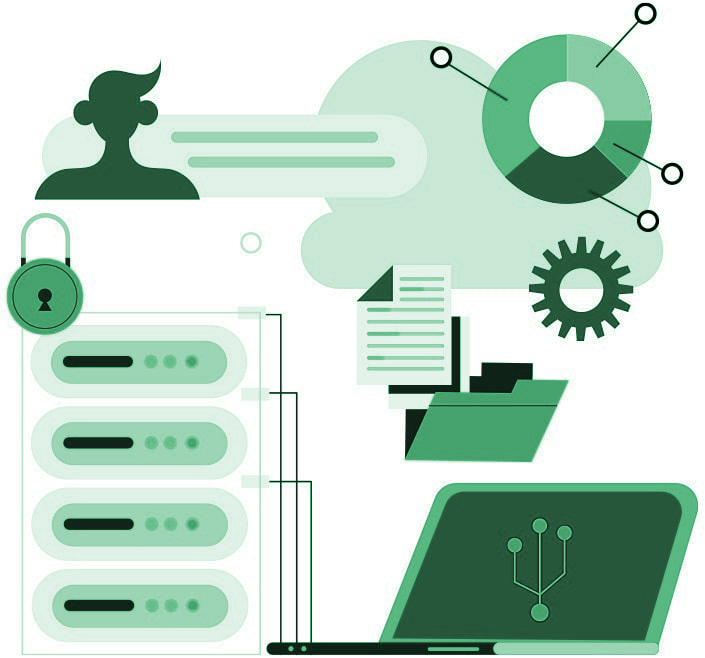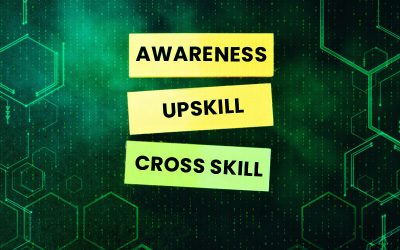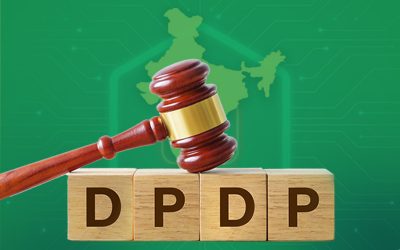Measure the commitments nonstop

The threat landscape is constantly evolving and so are the services and the way they are delivered. Change is imminent, but is security keeping up? Monitoring the performance of the Third Parties by defining key metrics can give you insights into how stable or shaky their security posture is. Having optics on such Third Parties will keep you apprised of the open risk and will help you channel the resources in the right direction.
Continuous Monitoring is a crucial step to monitor and track if the committed security standards by the Third Parties are well maintained and if proactive measures are taken to address security gaps and vulnerabilities. Continuous monitoring is a methodical approach to track the risks and security posture of all Third Parties delivering products and services. A carefully designed approach towards how the inventory is maintained, how the risks are tracked, how the tiering is maintained, how the security posture is tracked and how off-boarding is monitored plays an important part in the life cycle.
Common Challenges Faced by the Businesses
- Majority of the organizations lack a good enough tool to manage the monitoring activities resulting in increased manual tasks and human error
- Lack of customized processes to manage various aspects (Vulnerabilities, Risk ratings, Off-boarding etc.) with the changing infrastructure, new technologies and human resources
- Lack of periodic reporting cadence to senior and top management may lead to reduced oversight and defeat the purpose of due care
- Lack of a well-defined continuous monitoring lifecycle with periodic inputs results in gaps leading to insufficient coverage and monitoring of risk posture
- To proactively address the issues by a dedicated team
- Lack of periodic re-assessment exposes your organization to risks that are not addressed exposing it to security incidents or breaches
Risk Management is an iterative process that needs to be performed diligently, and continuously monitoring how your Third Parties are performing, especially the critical ones. As technology is continuously evolving and is being adopted by organizations of all shapes and sizes; with more and more automation & integration, the attack surface keeps increasing. Residual risk must be monitored periodically to ensure a “Low” severity risk that doesn’t escalate to a “Medium”, and a “Medium” risk that doesn’t escalate to a “High”. The higher the severity of risk, the higher the impact and resources required to address such High risk that needs to be provisioned accordingly. What was less relevant yesterday, becomes more relevant today. Tiering of Third Parties will be proportional to the risk exposure, hence an organization may end up accumulating more and more Third Parties in the higher Tier which adds to the overall risk and overhead.
Continuous monitoring although performed manually is best done using a tool. Enterprise tools provide security ratings of Third Parties by evaluating key security metrics under security domains and a weightage assigned to key domains that helps in deriving a score. A threshold on the score should be set by factoring in inputs from senior management and by following the best practices in the industry.
Annual re-assessments are an integral part of continuous monitoring and should be diligently carried out to continuously validate
- The scope of services has not changed
- If it has, additional control validation should be performed
- Appropriate security clauses should be added to the agreement
- Review Tiering and monitor for security rating

With quite a handful of activities and a sizable volume of data, the maturity of continuous monitoring can be showcased to the management via a well-designed reporting dashboard that gives insights into the dynamics of this important step.
Another important aspect of Continuous Monitoring is to exercise the right to audit during the contract renewal process which gives legal privilege to oblige Third Parties to comply.
What we do in the TPRM Continuous Performance Monitoring Phase
Customized processes and procedures to perform continuous monitoring effectively
- Risky Third Parties
- Timely re-assessment frequency
- Of identified risks
- Of off-boarding Third Parties
Iterative process(tool-based preferred) to manage the life cycle of continuous monitoring
Continuous monitoring although performed manually is best done using a tool. Enterprise tools provide security ratings of Third Parties by evaluating key security metrics under security domains and a weightage assigned to key domains that helps in deriving a score. A threshold on the score should be set by factoring in inputs from senior management and by following the best practices in the industry
Proactively determine issues and plan the fix
Custom notifications and alerts configured in the tool or manually help TPRM team to act on the outstanding or new issues and chart a plan to engage the Third Party to pursue remediation
Customized templates to manage operational activities of Continuous Monitoring
Templates enable uniform communication language which is uniformly perceived and understood reducing inconsistencies and miscommunication

Custom metrics for operational leads, senior management and the board to consume and reflect
A reporting cadence to socialize the stats and implications to key stakeholders to get a pulse of the risks and how the Third Parties are performing in terms of maintaining security
Best practices followed in the industry
Cadence of annual re-assessments, appropriate Tiering and common High Risk categories of Third Parties to be monitored
Consultation on tools as per requirement
Benefits associating with Defentrix under TPRM Continuous Performance Monitoring
Gain optics on Third Parties
-
- with a higher Residual Risk
- who maintain a sub-optimal security posture
Timely intimation of risks that are exceeding timelines exposing your organization to potential risks
Derive top ranking risks and trends over a time period that helps in improving the Due Diligence
Tracking re-assessment frequency to ensure scope of service and the way services are delivered have not changed
Pro-active action on security vulnerabilities such as Zero Day to engage Third Parties either based on the industry or categories defined
Pro-actively address the drop in the security ratings and understand the impact on the products or services availed by engaging with Third Parties
Instills a culture of proactive monitoring which will influence other teams to adopt and learn

Worried about your Information Security and TPRM?
Contact us today for complete consulting and implementation of Information Security
Latest Resources
2024 Leadership Vision for Third Party Risk Management (TPRM)
CISOs have a diverse array of rapidly evolving priorities, threats, demands, regulatory pressures, and technology changes to address. Leaders need a structured approach to today's security and risk landscape covering third-party risk. This blog sheds light on...
TPRM Awareness, upskill and cross skill
The security world is very diversified, with the majority of the organizations practicing defensive security while a few have adopted offensive security as well. Security professionals need to keep abreast with developments in Third Party Risk Management space and...
DPDP Act 2023 (India) and Third Party Risk Management (TPRM)
The impact of globalization, social networking, outsourcing, adoption of cloud and technologies, cross border data flows are some of the prominent reasons why data collection and sharing is ubiquitous in this digital age. Many countries have realized the importance of...



